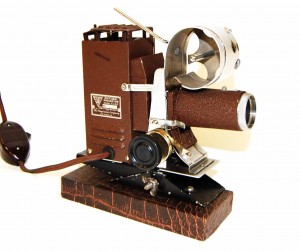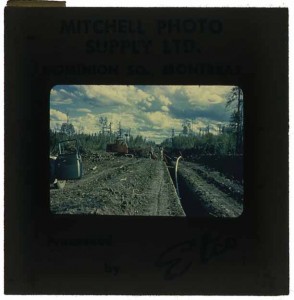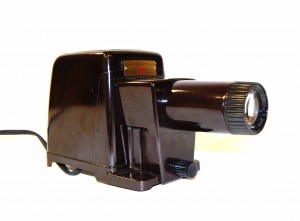Living in an image saturated world, it is easy to forget that photography is still a relatively new invention. Less than two hundred years ago, people saw extremely detailed and realistic images of the world captured in a permanent photograph for the first time. Needless to say, the invention of our favourite past-time, the motion picture, is even newer still. It is human nature to seek entertainment, yet we rarely consider what our great-great grandparents did for leisure. There has always been a desire to learn and discover new parts of the world, but long-distance travel was much less feasible during the 1800s, thus substitutes were made in a variety of forms of amusement. Before film and television, at a time that was full of innovation and creativity, there existed a number of forgotten optical spectacles involving the use of light and movement that have since disappeared from our generation.
Magic Lanterns
The magic lantern existed in many different formats for thousands of years and was based on the idea of projecting images with light onto a wall or surface. In fact, this idea is still one that is in popular demand, most familiarly with the projectors that are used for PowerPoint and other presentations in many classes here at Ryerson. However, this is by no means a new idea. The fascination with projection dates back to drawings made by Da Vinci that look similar to a Bull’s Eye lantern. First described in 1646 by Anthanasius Kircher, a German scholar, for use in science and philosophy, the magic lantern was quick to become a form of public entertainment.
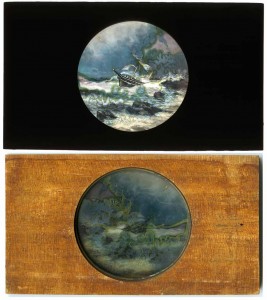
Although first limited to small audiences because of the strength of its illuminants, throughout the nineteenth century significant improvements were made to the technology, such as advances in lenses, illuminants and the use of mirrors that allowed for bigger, indoor shows and more fanciful and detailed slides. Magic lanterns were eagerly adopted as a form of entertainment and were used for shadow puppet shows, to illuminate engravings and create apparitions, and with hand-painted and photographic slides.
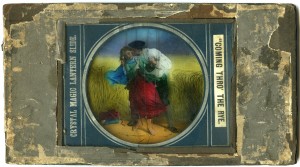
Especially during the nineteen hundreds, new types of magic lanterns began to appear. There were projecting microscopes, which were used in the field of biology, and magic lanterns that were used in pairs or sets of 3 that, with the aid of a fan-like device, were capable of creating dissolving views and other special effects. With the advent of photography and cinema, magic lanterns began to appear on the mass market under numerous names in a variety of formats. The Lumière Brothers used the technology for their first film screening in 1895. The 1950s saw the opto-mechanical advancements that began the popular trend of the slide projector, which was often used as a form of entertainment to show photographs to family and friends.
The idea behind them all was the same and they were actively used to tell stories, to educate, and to show audiences views of faraway places. Here in Special Collections we have a number of more recent examples of both slide and motion picture projectors, as well as photographic and hand-painted slides in a variety of formats.
Panoramas
Today when we hear the word “panorama” a 180 to 360-degree photograph is likely what comes to mind. However, the first patent for a panorama was issued in 1787 to Robert Barker, over 50 years before the invention of photography around 1839. It was one of the most popular forms of entertainment during the nineteenth century, yet something we rarely hear about today. Translated from Greek, the term panorama means ‘see all’ and that is exactly what they aimed to do. To really understand what the term panorama meant during the late 18th and 19th centuries, try to imagine walking through a dark corridor into a large, circular, naturally lit room in which, constructed from floor to ceiling, is a continuous representation of a distant land, a battle scene, or an escape from the industrializing city landscape that completely surrounds you. The painting has been made to appear as realistic as possible: the top edge has been masked by a veil or roof, and the bottom edge is concealed by a fence which you can walk up to. The average size of a panorama was 15 by 20 metres and took an immense amount of teamwork to build, but the results always attracted a crowd.

As the popularity of the panorama took off in the late 1700s and early 1800s, the term began to take on other meanings, and new formats of the medium began to be created. Any sort of large or oversized painting began to be considered a ‘panorama’ as well as huge paintings that would only cover a semi-circle rather than 360-degrees. Another popular format of the panorama was the moving panorama. Spectators of the moving panorama were seated in an auditorium and instead of being surrounded by the panorama a long roll painting was moved across a window, often set up with curtains similar to a typical theatre stage. A mechanical cranking system was used to pull the painting across the audience’s view. Often, music, lecturers or sound and light effects would accompany the presentation of the work. Unlike the circular panorama, the moving panorama used a transportable format that could tour to new cities and towns, saving on the costly operation of construction and making it more accessible. The panorama, in any sense of the word, was truly a spectacle that gave viewers a chance to experience the world without having to travel far from home, some of which still exist and can be viewed today.
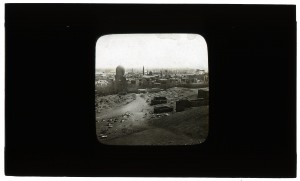
For examples of full panoramas still existing today:
http://www.metmuseum.org/toah/works-of-art/52.184
http://www.washingtonpost.com/wp-srv/artsandliving/interactives/cyclorama/
Dioramas
If you have taken a photography course at Ryerson, it is likely you have heard of L.J.M. Daguerre and his infamous diorama. The diorama often competed with the panorama and used a combination of ideas from both the panorama and the magic lantern to create a theatrical experience for the audience. The diorama consisted of an exhibition of enormous transparent paintings under changing lighting effects. With these effects, audiences could witness changes in mood and scenery, such as the weather. The illusions immediately got attention for their ability to transform paintings into three-dimensional renderings that many claimed could not be distinguished from large-scale models that used real objects. Similar to the panorama, the viewer was walked through a dark hallway into an auditorium that could hold close to 350 people, where they were kept stationary with the illuminations revolving slowly around them, only visible through screen tunnels that created depth and hid the edges of the paintings. The pictures measured close to 22 metres wide by 14 metres high and were situated 13 metres back from the front row. The viewer was kept in very dim lighting until the start of the show when the curtain was drawn up and the image was revealed. Effects were rendered through use of transparent and opaque painting techniques and coloured screens that altered the daylight passing through the back of the picture.
Information and images about Daguerre’s recently restored diorama at Bry-Sur-Marne can be found here:
Conclusion
Hence, our enjoyment of light, image and motion did not begin with the photograph or the motion picture. Multiple forms of entertainment experimenting with these elements existed from the 1400s through the 1800s and were very popular with audiences. Although here we have only discussed the panorama, the magic lantern, and the diorama, inventions for optical entertainment were not limited to these, and often shows would use a combination of each. If you are still curious about these forgotten forms of entertainment, visit Special Collections to find out what kinds of materials we have to facilitate further research into the subject, including books, slides and projectors. We are located on the 4th floor of the Toronto Metropolitan University Library and Archives. Call us at 416-979-5000 ext. 4996 or send us an email at asc@ryerson.ca
References:
Balzer, Richard. Optical Amusements: Magic Lanterns and Other Transforming Images – A Catalog of Popular Entertainments. Watertown, MA: Richard Balzer, 1987.
Chadwick, W.J. The Magic Lantern Manual. London: Frederick Warne & Co., 1878.
Comment, Bernard. The Panorama. Translated by Anne-Marie Glasheen. London: Reaktion Books, 1999.
Daguerre, Louis Jacques Mandé. An Historical and Descriptive Account of the Various Processes of the Daguerreotype and the Diorama. Paris: Béthune et plon, 1839. Reprinted with illustrations and an introduction by Beaumont Newhall. New York: Winter House, 1971.
Greenacre, Derek. Magic Lanterns. Princes Risborough, Bucks, England: Shire, 1986.
Huhtamo, Erkki. Illusions in Motion: Media Archeology of the Moving Panorama and Related Spectacles. Cambridge, MA: MIT Press, 2013.
